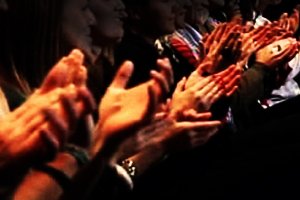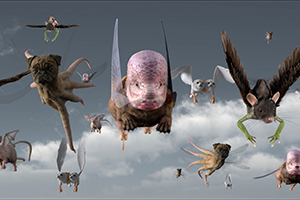BEYOND THE IMAGE: SOUND
MOMENTUM Carte Blanche program broadcast on
3 June – 3 July 2015
Featuring:
Lutz Becker // Amir Fattal // Gülsün Karamustafa
Hannu Karjalainen // Janet Laurence
Since the 70s, Berlin has attracted some of the most avant-garde musicians from around the globe, with a strong upsurge of experimental music in the 90s set within the rich atmosphere of possibility that marked the years following the fall of the Berlin Wall. Today, Berlin’s sound-scene continues to take a leading role on the international stage, with key yearly events such as Atonal, MaerzMuzik and CTM and permanent platforms such as N.K. Projekt, Ausland and Errant Bodies that stand at the forefront of their field. Sound in Berlin has maintained its status as a realm of emancipatory, political and artistic potential. Its current focus, however, has shifted from music to sound-art, though the line distinguishing these is thin and fluctuating. Increasingly, Berlin’s music venues offer installations and auditory experiments with space and new technologies, rather than what one might conventionally describe as a ‘concert’.
Within this backdrop and inspired by recent events in the city, as well as the rich discourse that they have engendered, for the past year MOMENTUM has been engaging more closely with sound. This has been marked by various new acquisitions to the Collection that redefine and expand our very understanding of time-based art. It has also entailed a revaluation of some of the older works in our Collection, in which the sonic elements have proven highly deserving of more focussed attention. In this sense, our explorations into sound are also exemplary of the way in which we engage with our collection; keeping it alive by continuously revisiting it from different perspectives and continuously questioning the nature and relevance of time-based art.
For LOOP 2015 and specifically within its strand Beyond the Image: Sound, MOMENTUM proposes a programme that represents 6 distinct artistic strategies is which sound takes on a decisive role. In them, the relationship of sound to the moving image is highly diverse, ranging from its imaginative or mnemonic potential in the absence of imagery, to sound as a powerful means to arouse empathy in direct relation to the moving image, to sound as the main content, superseding the primacy of that which is depicted on the screen. It is due to the rich diversity within its delimited focus that this programme is aimed to foment a critical reconsideration of the agency of sound within time-based art: an element that is often overseen or taken for granted, especially within the moving image, but that has immense emotive and even physical effects on the viewer/listener.

Lutz Becker, After The Wall, 2000
Lutz Becker was born in 1941 in Berlin, Germany and now lives and works in London, UK. Lutz Becker is an artist, filmmaker, curator and film-historian. He studied at the Slade School of Fine Art, London, where he graduated under Thorold Dickinson and became a distinguished director of political and art documentaries. A practicing painter, he is also a curator of exhibitions. He collaborated with the Hayward Gallery on The Romantic Spirit in German Art (1994), Art and Power (1995), and Tate Modern on Century City (2001).
Becker re-visits a sound installation commissioned for the exhibition After the Wall held at the Moderna Museet Stockholm in 1999 and subsequently in Berlin in 2000 at the Hamburger Bahnof, also curated by David Elliott. Its five constituent sound montages are based on original recordings made at the fall of the Berlin Wall. MOMENTUM presents the sound sculpture After The Wall in the context of the 25th anniversary of the fall of the Berlin Wall. The fall of the Wall 25 years ago, in November 1989, symbolised the end of the separation of the City of Berlin, as well as that of Germany into an Eastern and a Western state. It marked, for everybody to see, the final collapse of the idealogical empire of Communism.
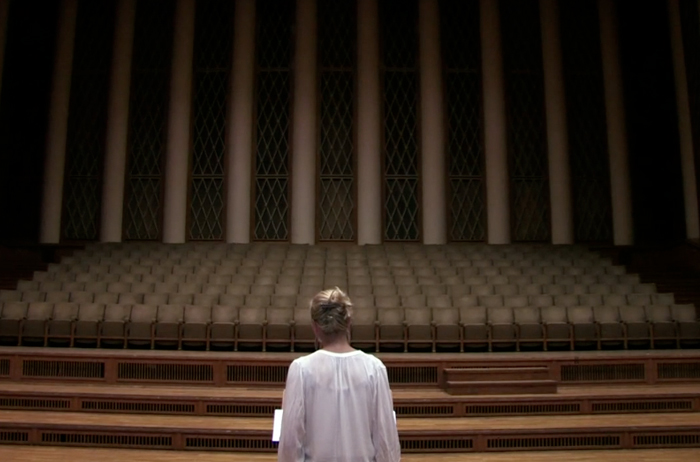
Amir Fattal, From the End to the Beginning, 2014
Amir Fattal was born in Israel in 1978, and is currently based in Berlin. Fattal graduated from Universität der Künste, Berlin, in 2009, and is a conceptual artist whose practice is one of historical reflection grounded in the history of aesthetics and cultural schisms. Fattal’s overarching concerns are the cultural connections between Germany and Israel – countries inexorably linked through their history, memory, culture, architecture, and the geographical diaspora which resulted in mass migrations, transposing cultures to new and different nations. The territory of Israel was once part of the Ottoman Empire, and then later administered by the British, yet the very creation of Israel is the legacy of the failed attempt to start the new Third Reich.
From the End to the Beginning is based on a live performance of Richard Wagner’s Vorspiel und Liebestod sequence played in reverse order. The video version of this performance was filmed in the big hall of the Berlin Funkhaus, built in the late 1950s as East Berlin’s new radio station, after musicians could no longer travel freely between the two sections of the city. Following the process of abstraction in music, theatre and light installation, this work is also a reflection on cultural taboos and historical memory. Wagner’s works remain banned from public performance in Israel and have become a symbol for the catastrophic ramifications that anti-Semitism can cause. Rewriting Richard Wagner’s ‘Liebestod’ line by line, fragmenting it to copy the last note as the first note, much as the Hebrew alphabet is read, the performance creates a new conceptual work challenging contemporary perceptions of historical and cultural readings to illustrate how culture is always an assemblage of the fragments of others.
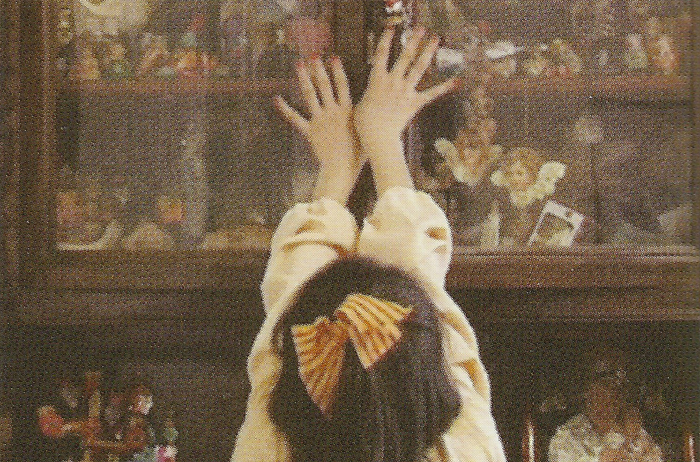
Gülsün Karamustafa, Personal Time Quartet, 2000
Gülsün Karamustafa was born in 1946 in Ankara, Turkey. She lives and works in Istanbul, where she is recognized as one of the most important and pioneering Turkish contemporary artists. Her work addresses questions of migration, displacement and military dictatorship (during the 1970s she was imprisoned by the Turkish military). She was refused a passport for sixteen years until the mid-80s and, unlike other Turkish artists, could not emigrate or travel. This enforced isolation led her to an analysis of her own situation and context: the city of Istanbul, interior migration and nomadism within Turkey, and the ideological and psychological ramifications of identity. Like a sociologist or anthropologist, Gülsün Karamustafa explores the historical and social connections of oriental cultures in her works, often using materials that express the hybrid character of different cultures and religions. Ostensibly reverting to historical lore, Karamustafa’s artistic comments oscillate actually between sensual meta-narratives and ironic-critical stories about the present situation, addressing themes of identity and migration, cultural difference and acculturation within the contexts of orientalism and post-colonialism. Since the end of the late 1990s, she has often used already existing materials and images of oriental or occidental origin that she fragments, dismantles and reassembles in order to contrast ‘private’ with ‘public’ by referring to every-day life, culture, art history, and the media.
The four-part video Personal Time Quartet is concerned with the point of in- tersection between the artist’s own personal biography and the history of her home country. Having been invited to an exhibition of German domestic inte- riors from various periods in the twentieth century at the Historical Museum in Hanover, Karamustafa was inspired by what she saw there to take a closer look at the similarities between her own childhood reminiscences and these muse- ological German living spaces. The timeframe (or ‘personal time’) covered by these four video’s begins in the year of her father’s birth and ends in the early days of her own childhood. A video screen placed in each of the rooms shows the same young girl – the artist’s alter ego – engaged in various activities. We see her skipping with a skipping rope (dining room, 1906), sorting and folding laundry (kitchen, around 1913), opening cupboards and drawers (living room and parents’ bedroom, around 1930) and painting her nails (room from the 1950s).
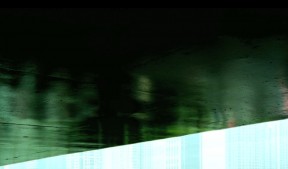
Hannu Karjalainen, Nanjing Grand Theatre, 2012
Finnish-born, Berlin-based artist Hannu Karjalainen develops his video practice from a grounding in photography and his training in the Helsinki School. Woman on the Beach is a photograph activated into a subtle poetic motion, rewarding the viewer for taking the time to watch it unfold. In subsequent work Karjalainen uses the medium of the moving image to reflect back upon painting and the material qualities of paint. Colour is an elusive subject matter. It is intangible and abstract as much as it is coded, branded and harnessed for different purposes. Hannu Karjalainen is particularly interested in how meaning is attributed to a colour, and how this mechanism can be exploited by re-contextualization, using colour and its supposed meaning as a critical tool to investigate the world around us. In an ongoing series of works that turn classical portrait photographs into moving color palets, Karjalainen again mobilizes the traditionally still image. Looking at painting through photography, its role becomes reversed.
Nanjing Grand Theatre explores the memory inherited in an architectonic site. The Nanjing Grand Thetre, a western classical style building designed by Chinese architects originally housed western cinema in the 1930s Shanghai. During the Cultural Revolution the building was dedicated to Beijing Opera and temporarily called Revolution Concert Hall. Now renamed Shanghai Concert Hall, the building is a prime location for classical music concerts. The massive construction plans in the Shanghai city centre called for the demolition of the building several times, as it was both in the way of a highway and a metro line. Finally a different solution was found: in early 2000s the building was moved from it’s original location by lifting the whole 5650 ton building up 3.38 meters and dragging the building to a new location some 70 meters southeast. The video work is shot on the original site of the concert hall, where an elevated highway now passes through the city. Passing lights and shadows take human forms as we hear snippets from the soundtrack of the very first film screened in Nanjing Grand Theatre, Broadway (1929). The film adaptation of the musical is now deemed lost in its original form, with only an edited version made from separate silent and talkie versions existing.
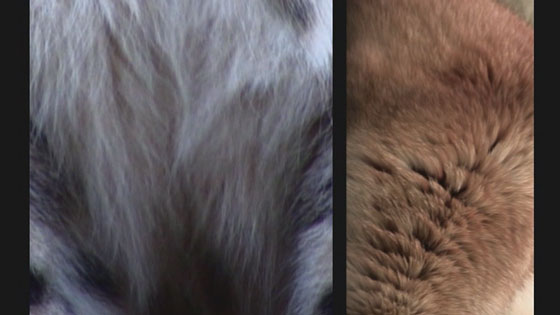
Janet Laurence, Vanishing, 2009/10
Australian artist Janet Laurence‘s work explores a poetics of space and materiality through the creation of works that deal with our experiential and cultural relationship with the natural world. Her work echoes architecture while retaining organic qualities and a sense of instability and transience. It occupies the liminal zones and meeting places of art, science, imagination and memory. Laurence’s practice includes both ephemeral and permanent works as well as installations that extend from the museum/gallery into both urban and landscape domain. Her work, centered on living nature, bleeds between the architectural and the natural world, physically and metaphorically dissolving these boundaries. Her spaces are immersive and reflective, creating a play between perception and memory. Alchemical transformation, history and perception are underlying themes. Laurence’s work is represented in major Australian and international collections and has been included in many national survey exhibitions.
Vanishing is Janet Laurence’s first video work, made during a residency at the Toranga Zoo in Sydney, Australia. After working primarily in photography and installation, Laurence began an ongoing filmic study of animals both in the wild and in nature reserves. She has developed a filming technique in which she uses infrared night cameras – similar to those used by naturalists, as many animals are primarily active at night – in order to achieve a negative effect and distorted, ghostly coloration. Originally shown as a two-screen installation, this single channel version was specially released for the MOMENTUM Collection following the artist’s involvement on a MOMENTUM panel on art and science.
Founded by Elizabeth Markevitch, IkonoTV is a unique television channel broadcasting art and only art 24/7 on HD. Offering a pure visual experience, an ever-changing playlist of art films is produced in close collaboration with more than 400 international artists, over 200 collections, archives and the most important museums of the world. All productions are free from additional sound or commentary, allowing an international audience to be exposed to a completely new approach to the arts of all epochs, from antiquity to contemporary art. Your television screen is transformed into a lively painting, a window straight into the worlds leading museums and galleries. In the conviction that everyone should have access to art in their homes, IkonoTV is viewable in more than 30 countries worldwide (average technical HD reach: 37 million households) through IPTV’s in Germany and France, through IPTV and ArabSat in the MENASA region, and internationally on our HD web stream.


 Back to Homepage
Back to Homepage